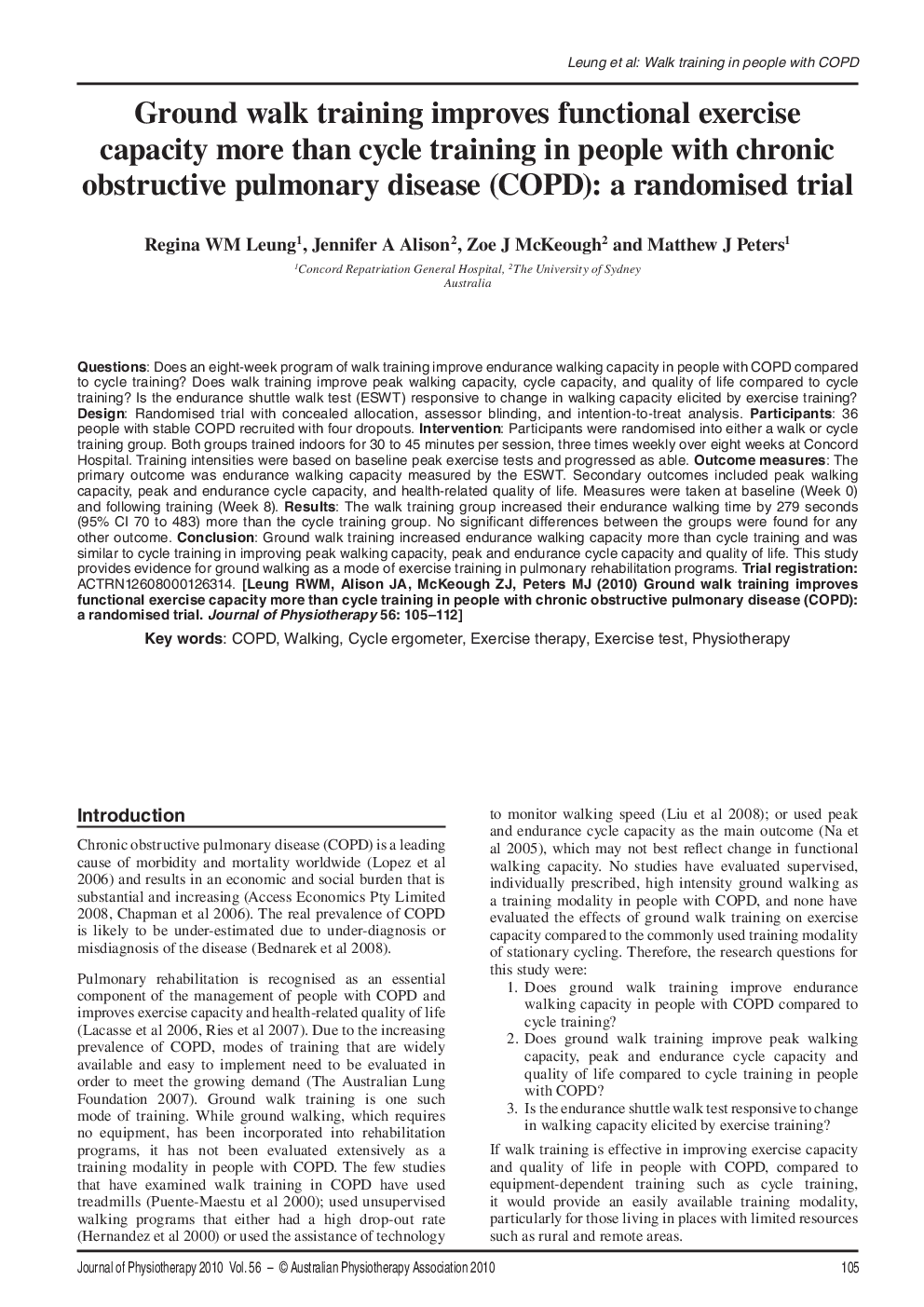| Article ID | Journal | Published Year | Pages | File Type |
|---|---|---|---|---|
| 2622740 | Journal of Physiotherapy | 2010 | 8 Pages |
QuestionsDoes an eight-week program of walk training improve endurance walking capacity in people with COPD compared to cycle training? Does walk training improve peak walking capacity, cycle capacity, and quality of life compared to cycle training? Is the endurance shuttle walk test (ESWT) responsive to change in walking capacity elicited by exercise training?DesignRandomised trial with concealed allocation, assessor blinding, and intention-to-treat analysis.Participants36 people with stable COPD recruited with four dropouts.InterventionParticipants were randomised into either a walk or cycle training group. Both groups trained indoors for 30 to 45 minutes per session, three times weekly over eight weeks at Concord Hospital. Training intensities were based on baseline peak exercise tests and progressed as able.Outcome measuresThe primary outcome was endurance walking capacity measured by the ESWT. Secondary outcomes included peak walking capacity, peak and endurance cycle capacity, and health-related quality of life. Measures were taken at baseline (Week 0) and following training (Week 8).ResultsThe walk training group increased their endurance walking time by 279 seconds (95% CI 70 to 483) more than the cycle training group. No significant differences between the groups were found for any other outcome.ConclusionGround walk training increased endurance walking capacity more than cycle training and was similar to cycle training in improving peak walking capacity, peak and endurance cycle capacity and quality of life. This study provides evidence for ground walking as a mode of exercise training in pulmonary rehabilitation programs.Trial registrationACTRN12608000126314.
